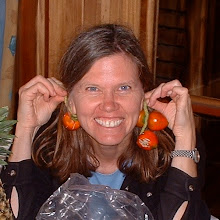I hereby bestow my own architectural award for a new building in our neighborhood. It's a new Little Free Library that neighbors have put up in front of their house. (I've blogged before about these little libraries where you can leave a book and take another one in exchange.) This is the cutest little library I have seen, and given the competition in the cuteness category, that is saying a lot.
The attention to detail is wonderful. Someone cut little shingles and put bricks around the base below the to-scale siding. It has a dormer and well trimmed windows. However, the cutest thing about it is that it matches the owners' house, which is in the Marquette Bungalows Historic District. I also appreciate the added touch of a bench for library browsers.
I've already become a regular patron of this library, which always seems to have at least one book I want to read.
The attention to detail is wonderful. Someone cut little shingles and put bricks around the base below the to-scale siding. It has a dormer and well trimmed windows. However, the cutest thing about it is that it matches the owners' house, which is in the Marquette Bungalows Historic District. I also appreciate the added touch of a bench for library browsers.
I've already become a regular patron of this library, which always seems to have at least one book I want to read.











